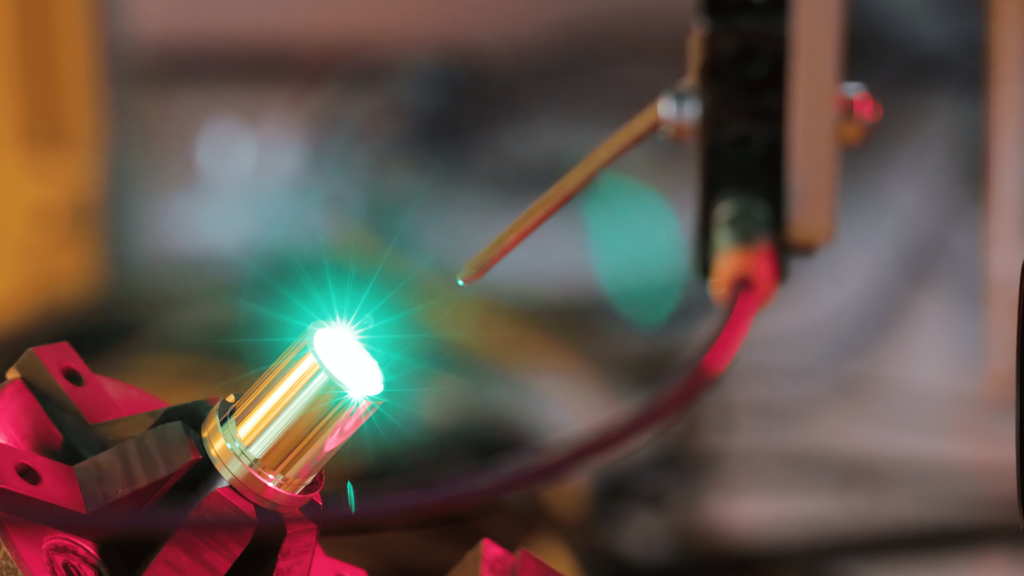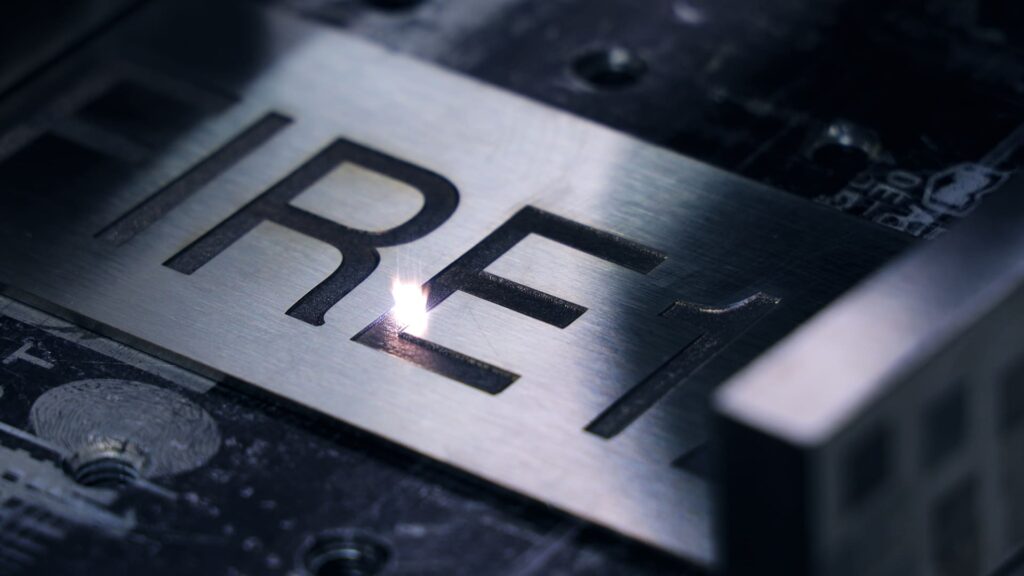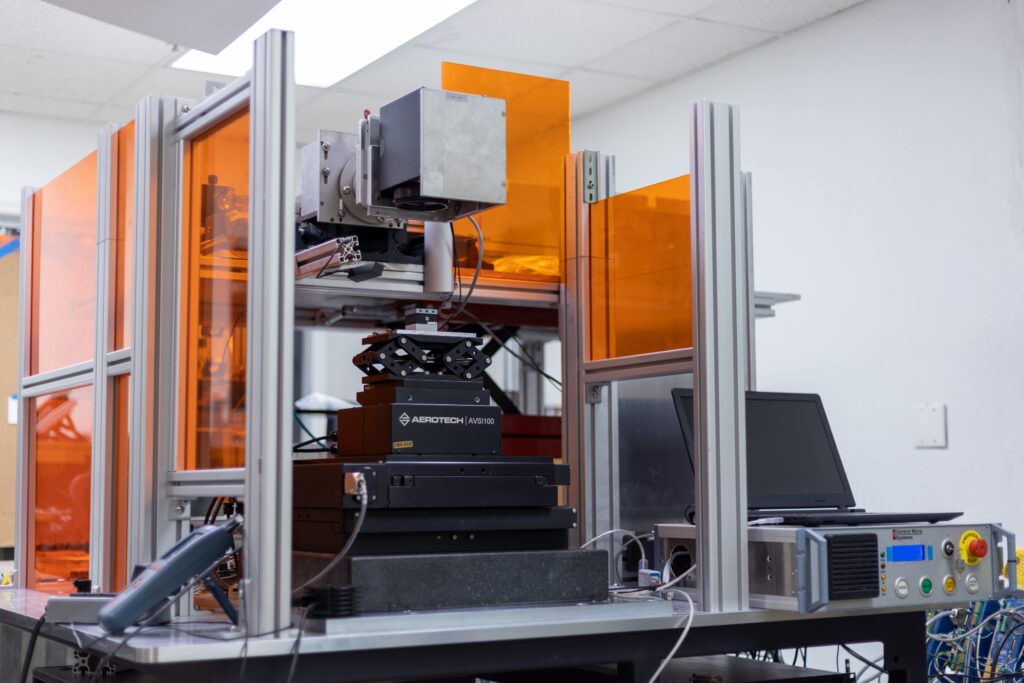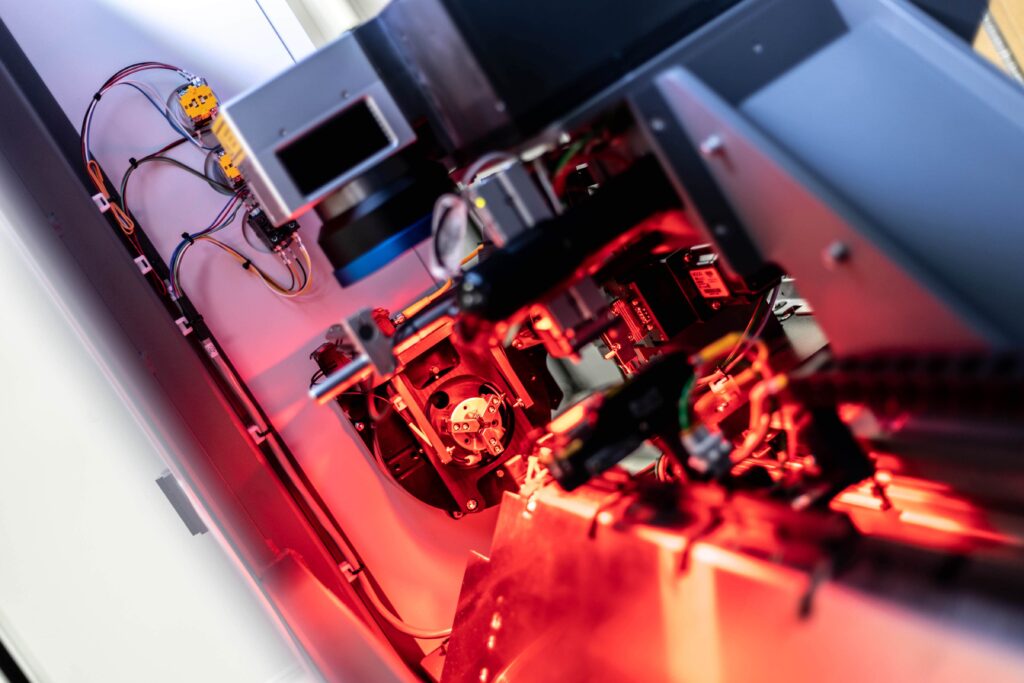
Ultrafast Laser Processing
Ultrafast lasers—including femtosecond and picosecond lasers—are ideal for precision micromachining applications, such as processing semiconductors, flat panel displays and various thin-film materials.

Eliminate Heat Discoloration with Ultrafast Lasers
Thanks to short pulse widths and high repetition rates, ultrafast lasers excel in applications that have traditionally utilized nanosecond lasers. Metals can now be cut or engraved with little to no heat affect zones (HAZ), eliminating any heat discoloration and excess slag when done correctly. Micro tubing, thin foils, and plastics all benefit from these new lasers and we are actively researching new ways to apply them.
Ultrafast Laser Solutions
Applications may include:
- Precision micromachining
- Black marking of stainless steel or aluminum
- Surface micro-structuring and texturing
- Multilayer polymer film cutting
- Battery and thin metal foil cutting
- Sapphire LED wafer scribing
- Thin film ablation for solar, PV or flat panel displays
- Precise marking of metals, polymers or glass
- Micromachining of ceramics

When laser pulses are a few picoseconds or less, material interaction occurs so quickly the heat doesn’t have time to travel outside the event zone—also known as the heat-affected zones (HAZ). With the right laser, optics and settings, this eliminates the HAZ in material processing applications—enabling you to:
- Etch metals and ceramics with the same high level of detail found in acid etching
- Eliminate the post-processing associated with nanosecond lasers
- Cut thin metals with no raised edges on top or bottom surfaces
- Process materials with no discoloration halos around cuts or engravings
Femtosecond lasers depend less on the wavelength than nanosecond lasers for processing materials like polymers, glass and ceramics due to the multiphoton absorption of ultrashort pulses. Multiphoton absorption can bridge large band gap energies that normally require the high photon energies of short wavelength lasers. Short wavelengths may still be required even with ultrashort lasers if small spot sizes are required. These lasers also typically have high repetition rates—achieving high processing speeds.

Ultrashort marking creates nanostructures in the surface that scatter and trap light—imparting a dark contrast on the metal surface. You can use this same process to mark bare and clear anodized aluminum as well. The coupon on the left is the picosecond mark. Notice that it has a flatter black appearance and consistent contrast even when viewed at an angle.
Studies have shown that this mark is extremely durable, maintains much of the original chromium oxide layer and doesn’t diminish corrosion resistance. For critical applications, corrosion resistance can be further improved with passivation. For coated stainless steel, preliminary testing indicates that marking takes place without coating removal.
Related Videos

The Unique Material Processing Capabilities Of Ultrafast Lasers

Ultrafast (Picosecond And Femtosecond) Laser Drilling For The Medical Industry
The Absolute Best Customer Service Around
Working with the entire Control Micro Systems team on our project was a pleasure. CMS was capable of meeting and exceeding our goals. They successfully designed and built a machine which increased our throughput by 550%! We are so glad we chose to move forward with CMS.
In the three years ACR has owned the CMS laser, it has worked flawlessly. In the few instances where ACR needed support in programming, CMS was quick to respond.
CMS have been excellent partners in the development of new, complex equipment for our business. CMS built multiple machines for us. Each machine had a different purpose, however the CMS team worked openly & honestly with us to agree on optimal solutions for each one.
We Partner With You
To develop solutions, solve problems, and create efficiencies.